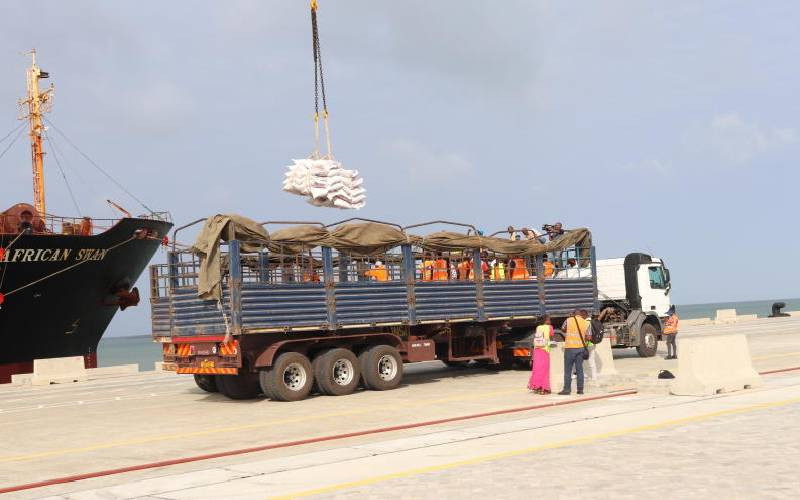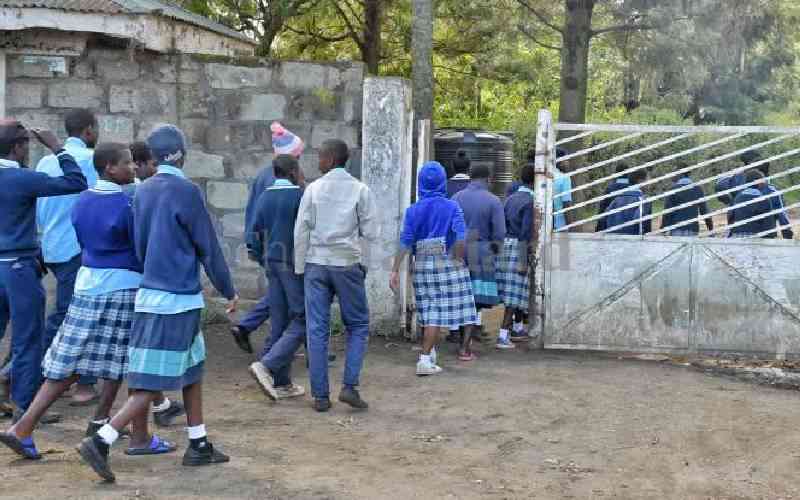
Hezbon Anyona was busy watering his fodder farm when Business Beat visited his farm. The 15 acres farm located Sikri village, Mbita Sub County and Homa Bay County grows fodder; Mulato, desmodium and Boma Rhodes.
Anyona, like many locals in Nyanza, had never thought of dairy and fodder production, because of high cost of dairy cows, lack of feeds especially during the dry season, unfavourable climatic conditions for dairy rearing and lack of technical information.
But today, they have embraced dairy value chain, involving dairy farming, fodder production and value addition.
Yet, according to USAID and Kenya Agricultural Value Chain Enterprise Project (KAVES), dairy value chain is among dynamic sectors in Kenya and critical to the country’s rural economy, currently valued at over Sh184 billion, contributing six to eight per cent to the Gross Domestic Product.
“In the past, dairy farming was completely foreign activity in this region ... we depend mainly on fishing livelihood,” explained Anyona.
For many years, Anyona planted horticultural crops such as tomatoes, melons, Sukuma wiki and onions. However, in 2006 monkeys and baboons from nearby Sikri and Gembe Hills invaded his farm and destroyed crops worth Sh400,000.
Discouraged, Anyona opted for dairy cows. He explains: “I started by planting fodder so that they will have enough feed.”
New investment
He bought seeds from KARI now, Kenya Agricultural and Livestock Research Organisation (KALRO) and International Centre of Insect physiology and Ecology (ICIPE) and planted half an acre each for Mulato, desmodium and Boma Rhodes. After planting, the immediate challenge was water and was forced to buy a small water pump to help irrigate his farm.
The fodder matured after four months. Since it was during dry season, his harvest attracted some locals who had lacked fodder. He made good money from the harvest that encouraged him to go on with the fodder business.
He says: “People kept coming for fodder even after dry spell. Eventually I ventured in to dairy business.”
Several years later in 2014, Anyona met officials of USAID, through Kenya Agricultural Value Chain Enterprise Project (KAVES).
At this time, the USAID-KAVES had come to promote dairy farming activities in the Nyanza region, a non-traditional dairy area, as a strategy towards increasing production, improve access to milk, and increasing incomes for rural small-scale farming families.
“We started identifying and targeting small scale farmers who reared local cows, especially for milk that was consumed at home. The idea was to train them and build their capacity,” explained Ms Beverly Shitandi, USAID Kisumu Regional Manager and Senior Dairy Specialist.
Supply deficit
Stay informed. Subscribe to our newsletter
Ms Shitandi explains: “There was big gap between dairy farmers and those who produced fodder in the area. We encouraged locals with large farms to venture into commercial fodder production and sell to others who did not have land.”
She says fodder is critical in dairy production because it constitutes 70 per cent of the daily animal feed requirement with feed supplements supplying the other 30 per cent.
As per the dairy value chain analysis conducted by KAVES in 2015, current milk production is estimated at 6.2 billion liters, to reflect a deficit of about 675 million liters.
But with large dairy cow population of more than 3.5 million, the country has in the past been self-sufficient, often producing surplus for export.
The group has invested in high yielding milk breeds, fodder production and selling milk together as a cooperative.
A year ago, the group ventured into value addition, making yoghurt that retails at Sh40 for 250ml and 500ml Sh80.
 The Standard Group Plc is a
multi-media organization with investments in media platforms spanning newspaper
print operations, television, radio broadcasting, digital and online services. The
Standard Group is recognized as a leading multi-media house in Kenya with a key
influence in matters of national and international interest.
The Standard Group Plc is a
multi-media organization with investments in media platforms spanning newspaper
print operations, television, radio broadcasting, digital and online services. The
Standard Group is recognized as a leading multi-media house in Kenya with a key
influence in matters of national and international interest.
 The Standard Group Plc is a
multi-media organization with investments in media platforms spanning newspaper
print operations, television, radio broadcasting, digital and online services. The
Standard Group is recognized as a leading multi-media house in Kenya with a key
influence in matters of national and international interest.
The Standard Group Plc is a
multi-media organization with investments in media platforms spanning newspaper
print operations, television, radio broadcasting, digital and online services. The
Standard Group is recognized as a leading multi-media house in Kenya with a key
influence in matters of national and international interest.








